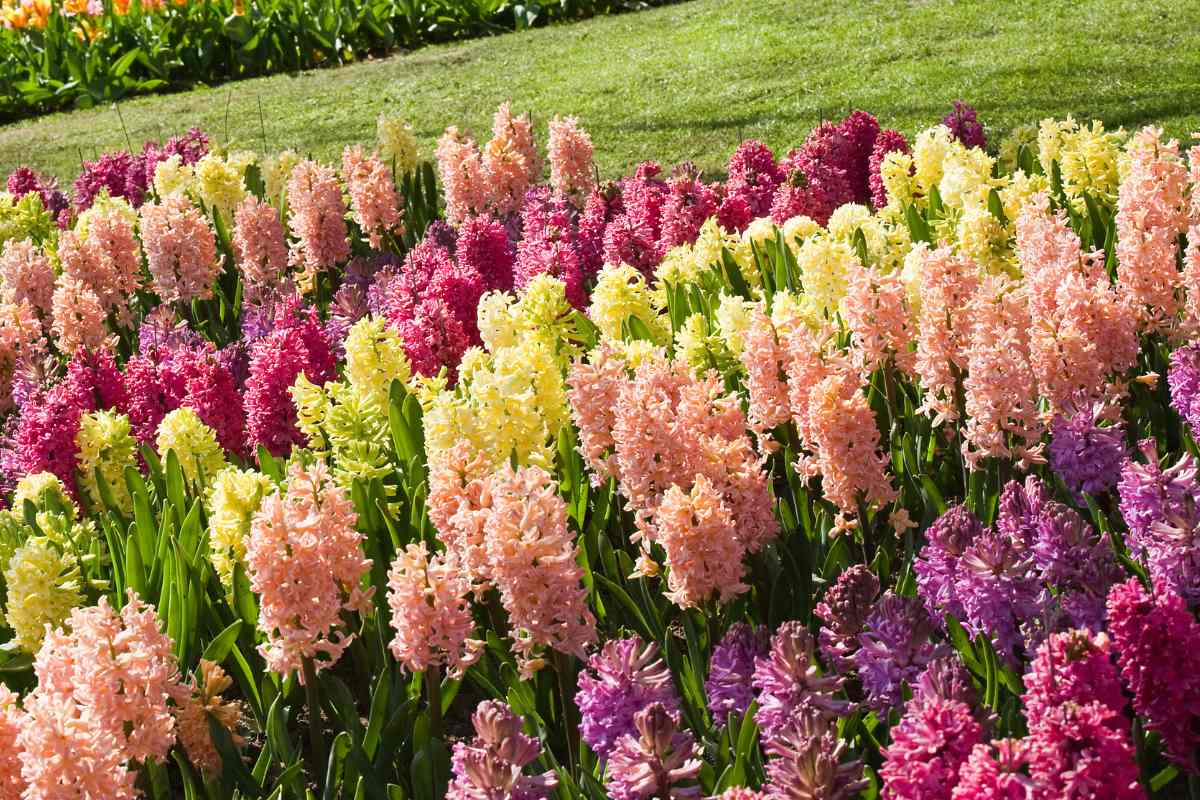
All About Hyacinths: Add Vibrant Colour to Your Garden
What better way to welcome spring than with the delightful sight and fragrance of hyacinths! These bulbous plants produce spikes of sweetly scented flowers in a wide range of beautiful colours, from soft pastels to striking deep blues and pinks. To begin to make your dreams of a scented spring a reality, jump into the garden in autumn to plant your bulbs!
Table of Contents
Varieties of Hyacinths
Hyacinths come in a variety of colours, making it easy to find one that will complement your garden setting. These gorgeous flowers range in a wide variety of colours: white, peach, apricot, yellow, salmon, pink, red, purple, lavender and blue. Each hyacinth bulb produces a single, compact, and dense stem bearing 60-70 delicate bell-shaped florets. Hyacinths all grow to a height of 25 cm (10”), are heavily fragrant, deer resistant, and look great in your garden beds, as well as containers. Plant a rainbow of colour with these favourites: Carnegie (white), City of Haarlem (yellow), Delft Blue (blue), Gipsy Queen (orange), Woodstock (deep purple-maroon), Jan Bos (deep red), Rembrandt (deep blue with white edging), and Pink Pearl (medium pink).
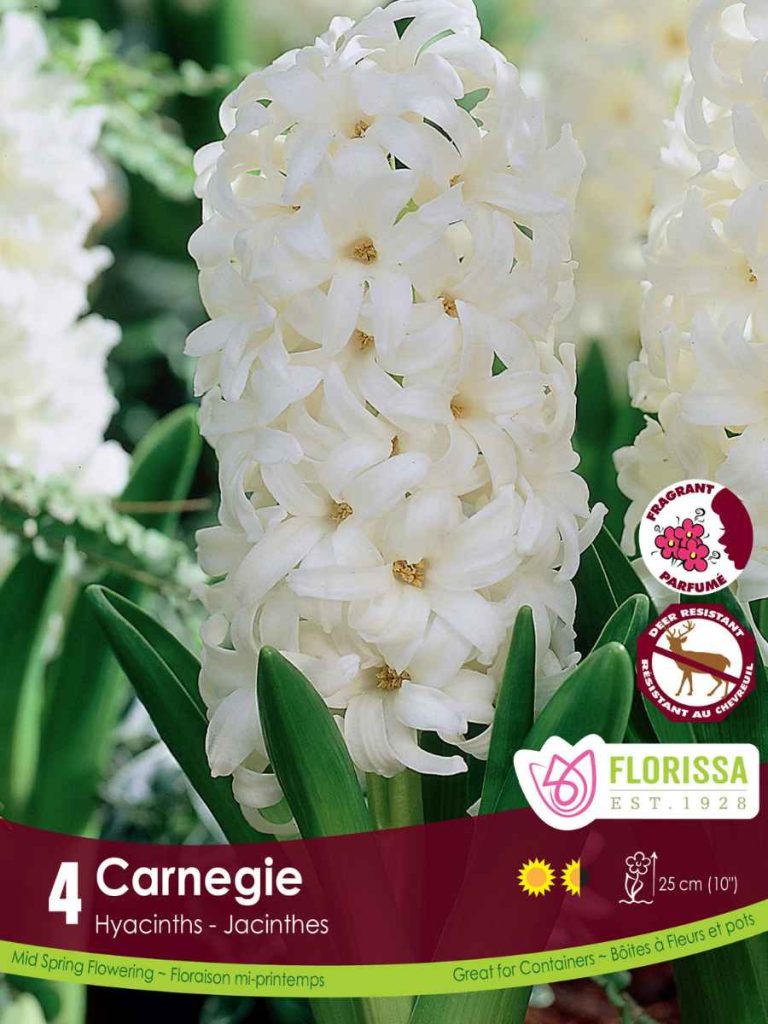
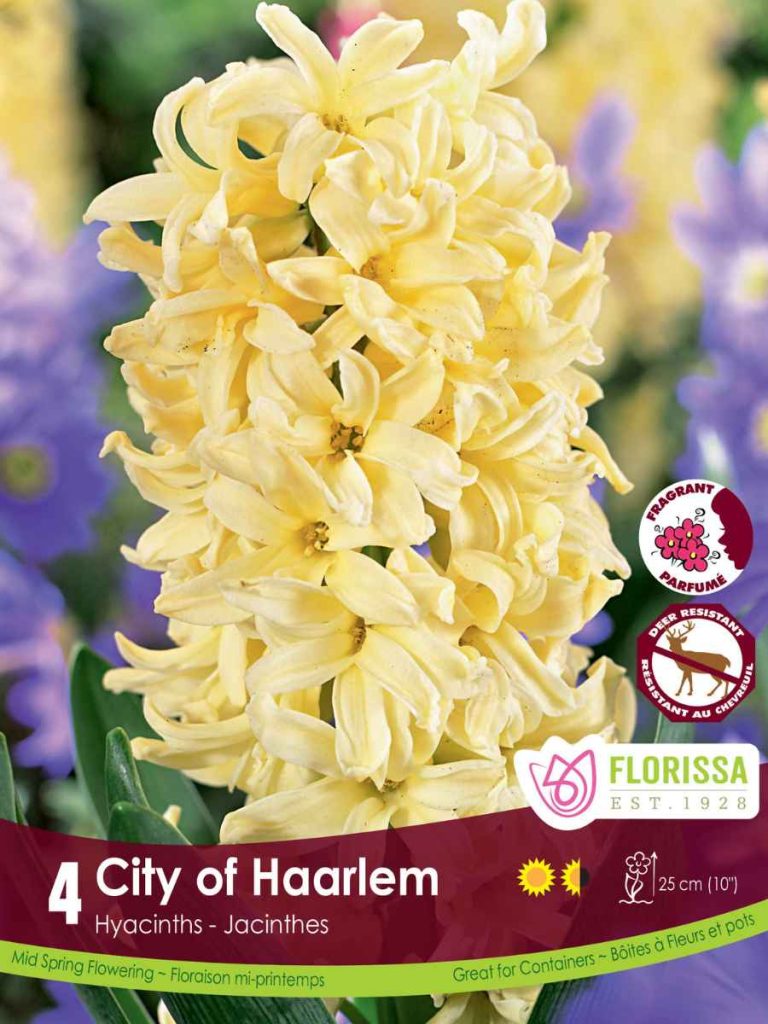
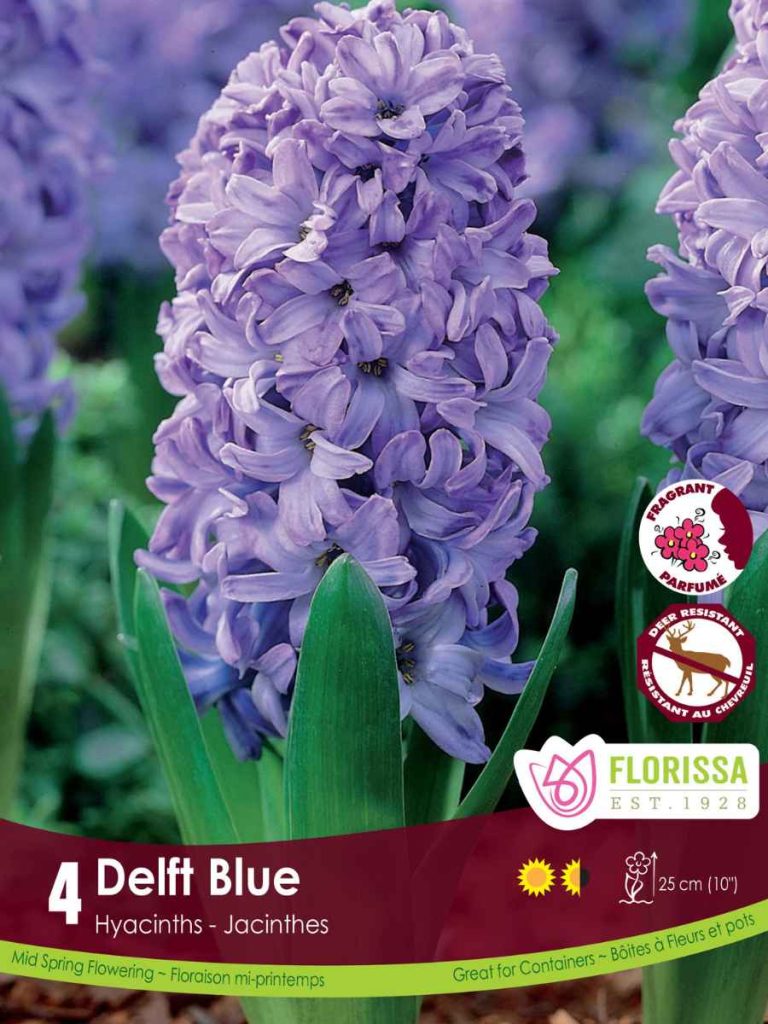
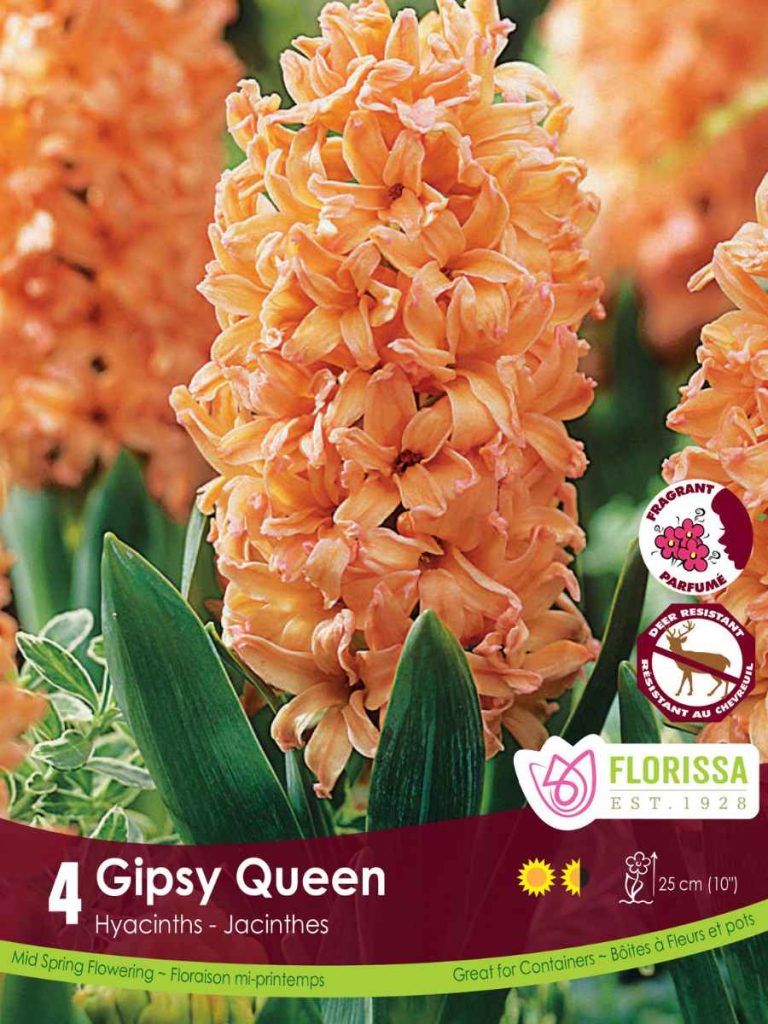
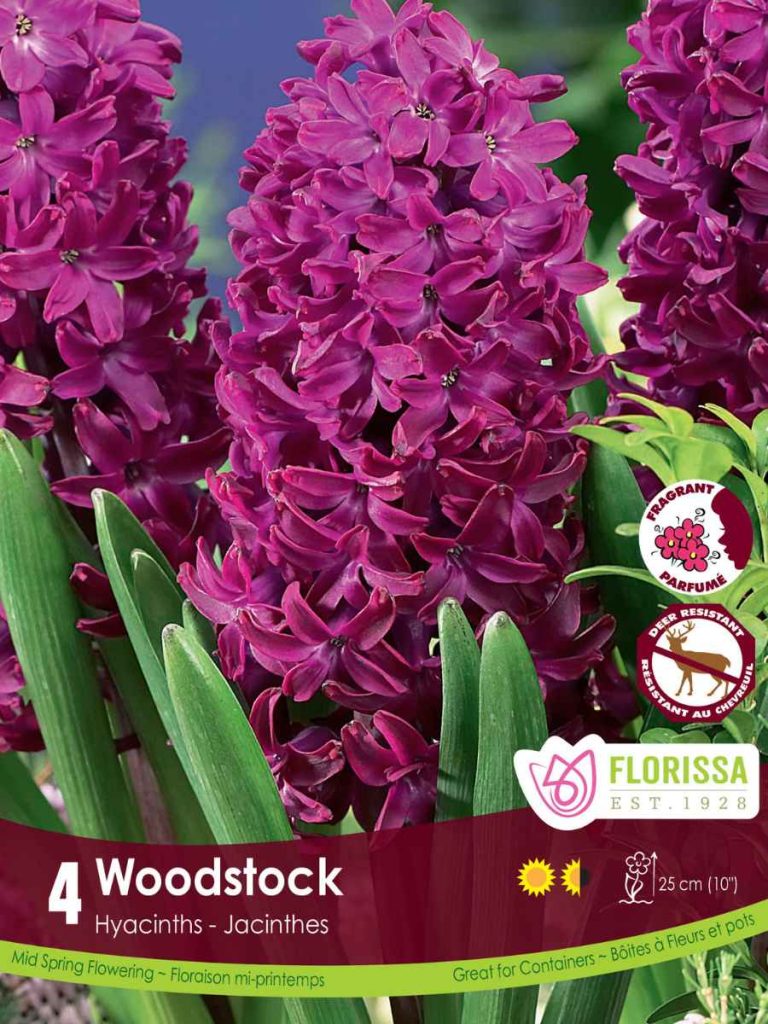
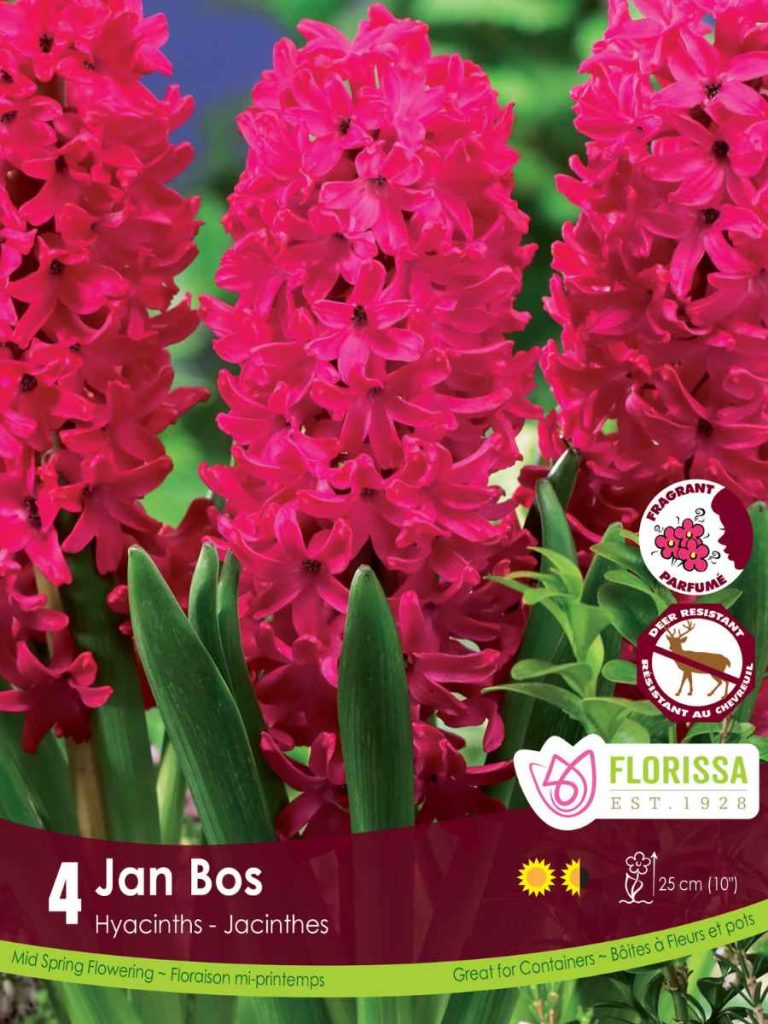
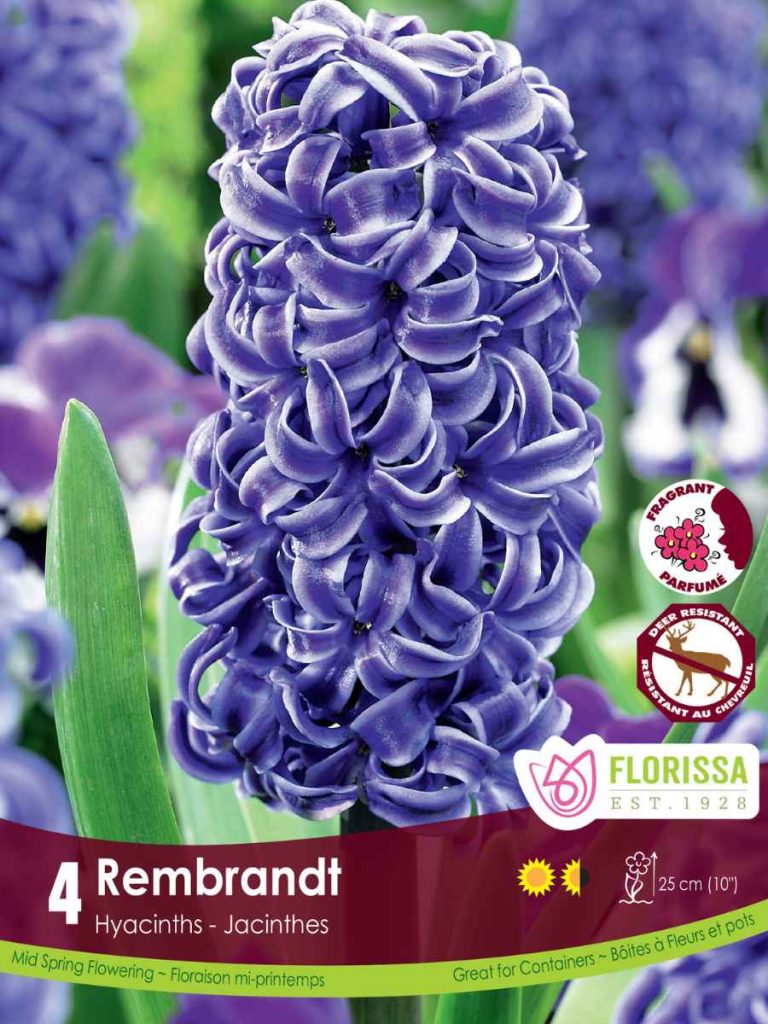
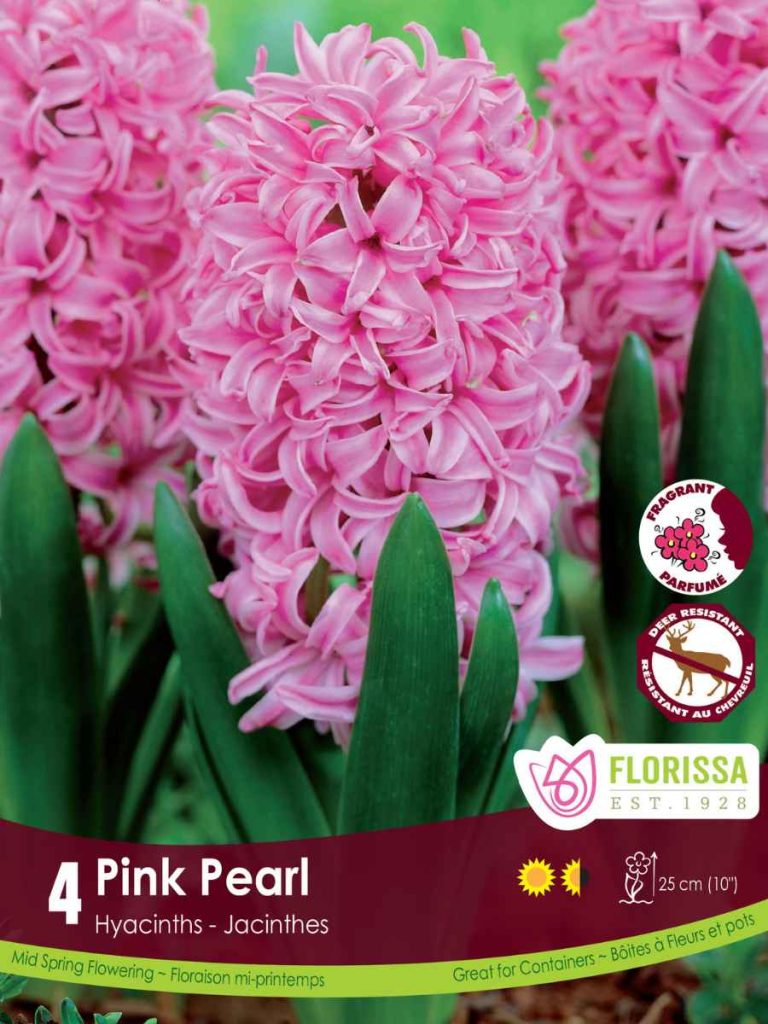
When selecting your bulbs, hyacinths are available in both prepared and regular bulbs. Regular bulbs are ready to be planted outdoors in containers, flower beds and borders, whereas prepared hyacinths have already received a short period of cooling which makes them ideal for forcing into bloom indoors.

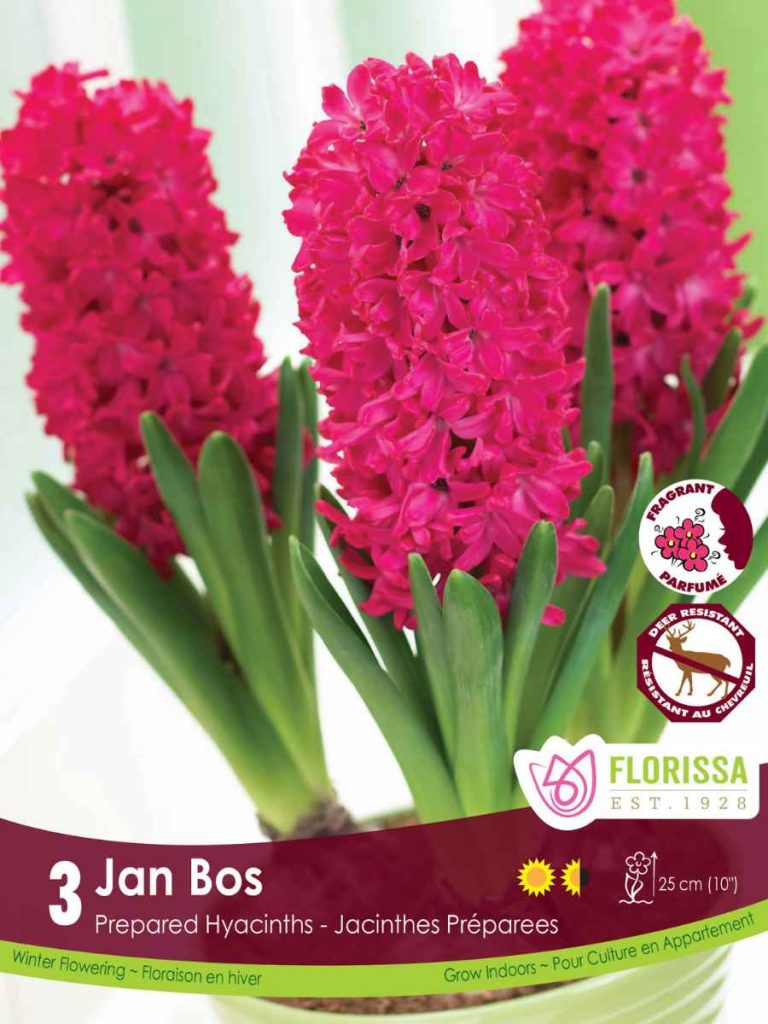
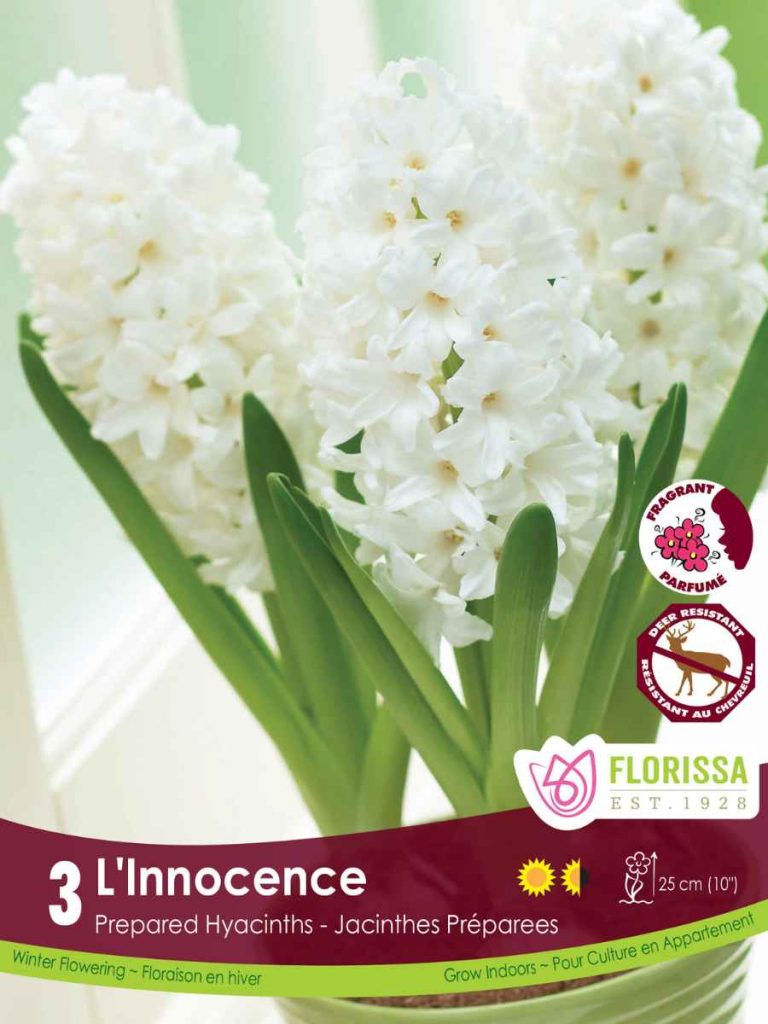
Florissa’s Tip
When planting hyacinths in containers, try planting different varieties! The combination of colours looks amazing!
Planting Hyacinths
Hyacinth bulbs should be planted in the fall before the ground becomes too cold and the first frost sets in. You can choose to plant them either in containers or directly into well-draining soil. To enjoy their sweet fragrance in spring, plant them near high-traffic areas, patios, edging and planters near your front door. Plant hyacinth bulbs in clusters for maximum visual impact or combine them with other spring flowering varieties such as tulips and narcissi! Hyacinth bulbs papery sheath contain a substance called calcium oxalate, which can be irritating to the skin, but is what makes them deer and squirrel-resistant. If you have sensitive skin you may want to wear gloves when handling hyacinths. If you forget to wear your gloves, just wash your hands with soap and water. Plant your hyacinth bulbs pointed side up, 15 cm (6”) both deep and apart, in full to part sun. Make sure to water the planting area well after planting. Then in early to mid-spring (late March through April) your hyacinth bulbs will grow and produce the most amazing fragrant blooms! Hyacinths grow to 25 cm (10”) tall and are hardy to zone 4 (to check your hardiness zone, view our Canadian Plant Hardiness Zone map).

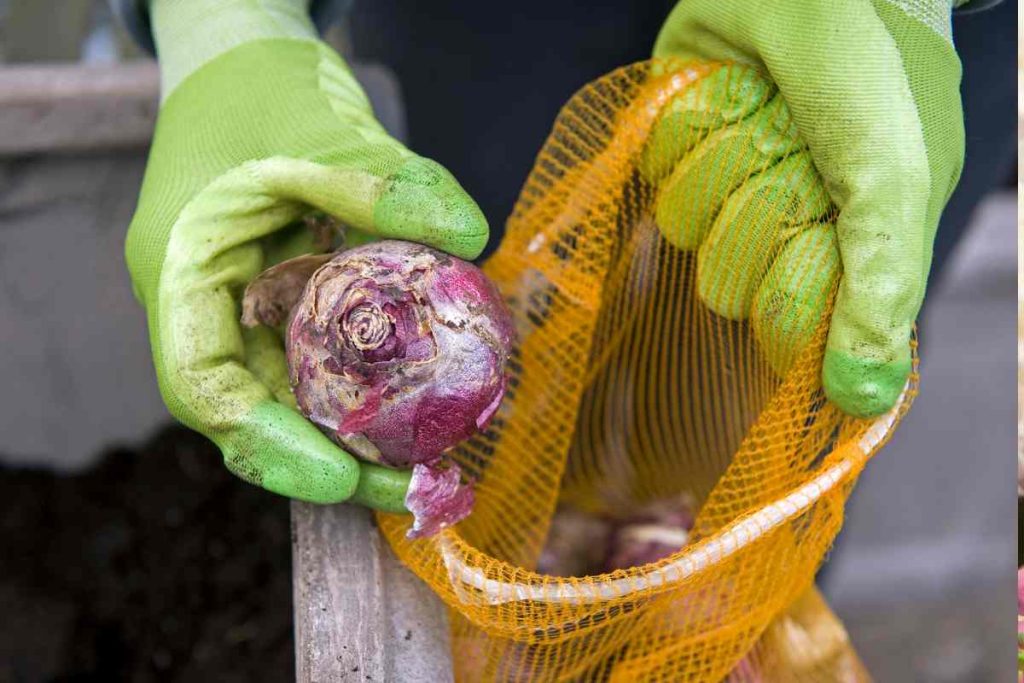
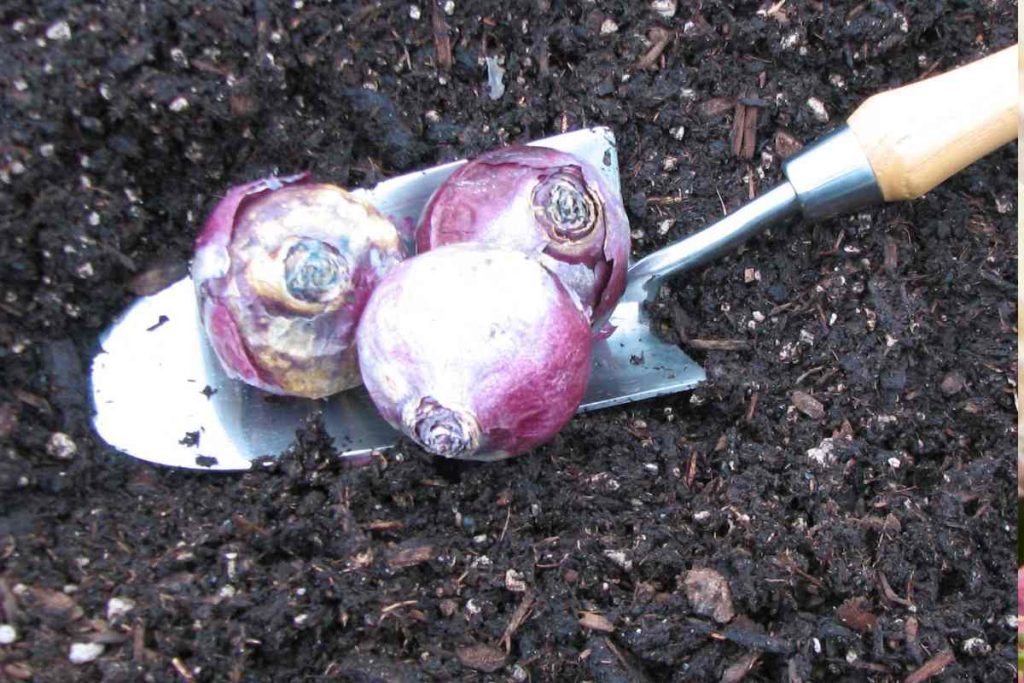
If you reside in an area that may not be able to support the growth of hyacinths outside, you can grow them in containers. You will still be able to create an amazing display! Similar to planting in the ground, plant bulbs pointed side up, 15 cm (6”) deep, and give them a good soak. With planting in containers, you can plant them a little closer together. When the cold weather sets in, bring your container close towards the house, or into a shed, carport, or garage. Make sure to water your bulbs regularly, and when the weather warms up, bring your container outside, and watch your hyacinths bloom!
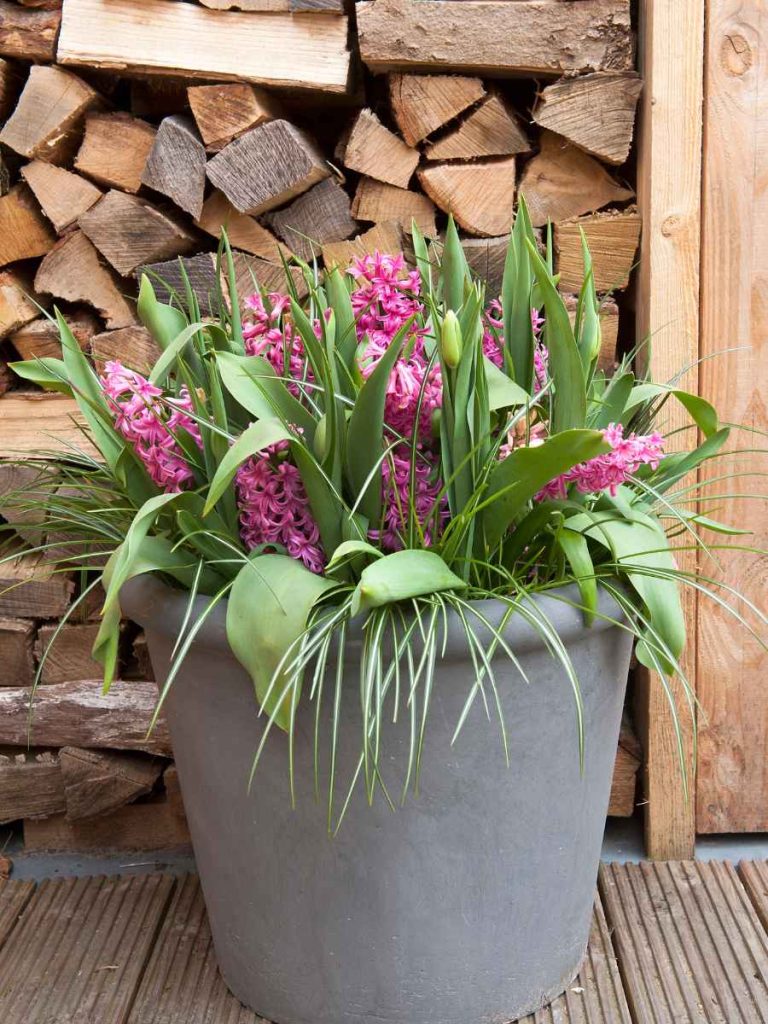
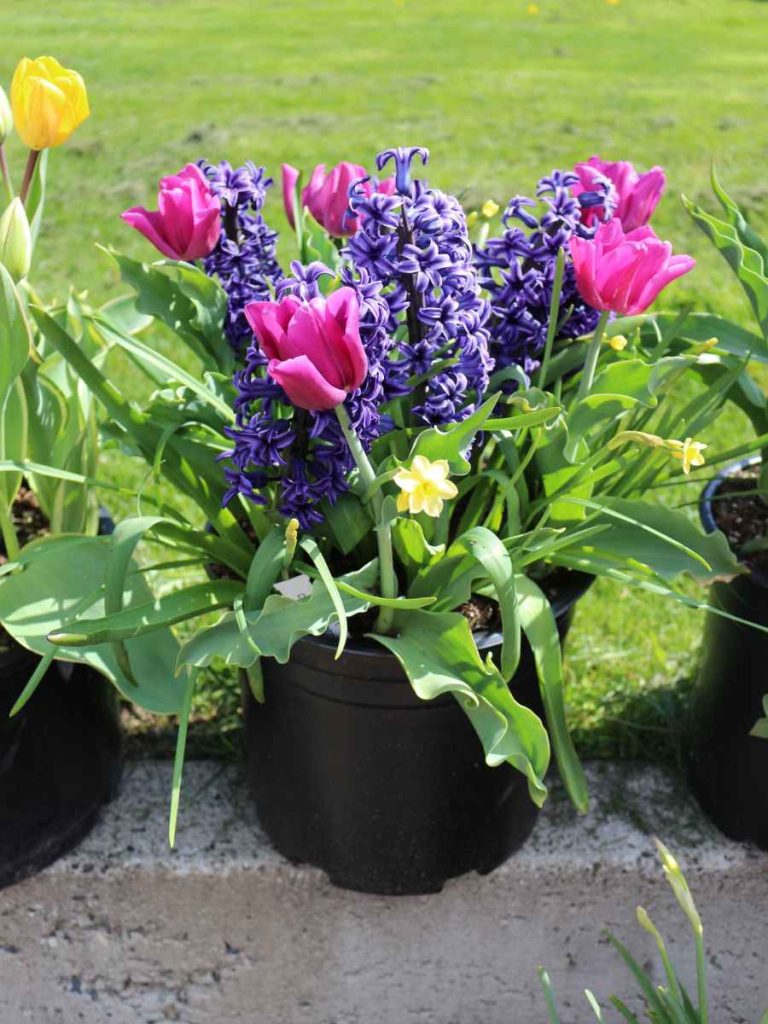
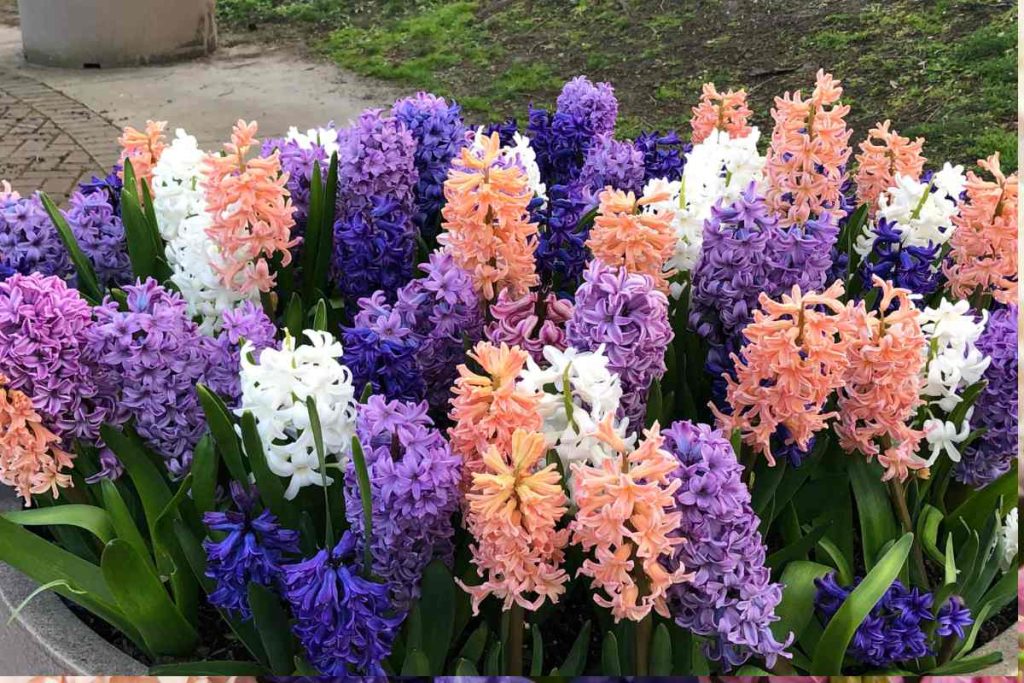
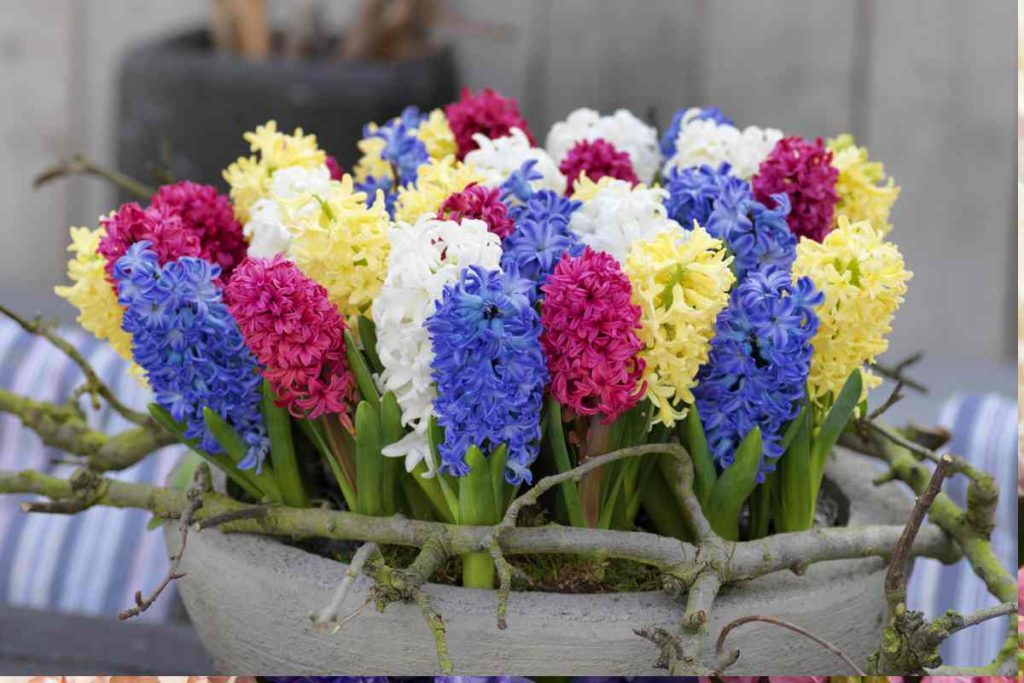
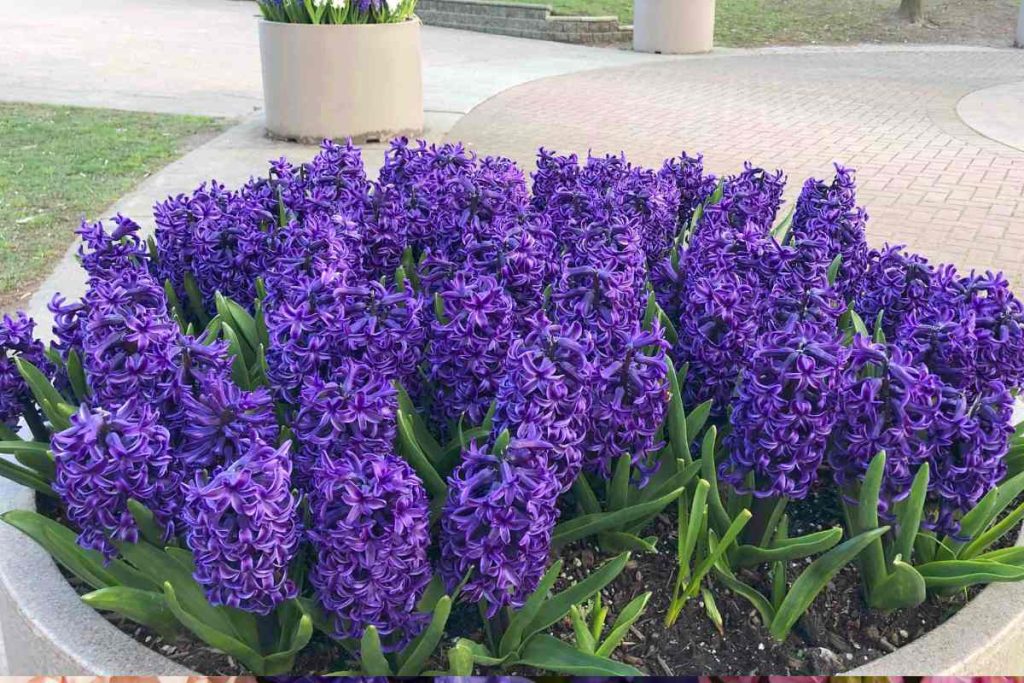
In addition, keep reading, and learn how you can grow hyacinths indoors!
Caring for Hyacinths
Hyacinths are low maintenance, but there are a few things to keep in mind when caring for them. They need a period of cooling to grow to the proper height. Regular hyacinths need 15 weeks at 9 C or below and prepared hyacinths need 8 weeks at 9 C. Once planted hyacinths will set roots into the moist soil and go dormant over winter. In spring, if you do find a dry spell occurring in your area and the soil becoming dry, make sure to water your flowerbed and containers! This will allow you to enjoy their beauty and fragrance for longer.
After your elegant hyacinths have finished their blooming season, the florets will start to fade. At this point, you will want to remove the flower stalk near the base of the foliage. Make sure to only remove the flower stalk, leaving the foliage intact. Removing the flower stalk stops the plant from expending energy into forming seed heads. This will in turn put that energy back into the bulb, getting it ready for next year’s bloom. During this regeneration period, it is the perfect time to add compost or fertilizer to your planted areas. Allow the leaves to die back naturally and trim them to soil level when they have turned yellow. Leave your hyacinth bulbs in the ground for next year’s blooms!
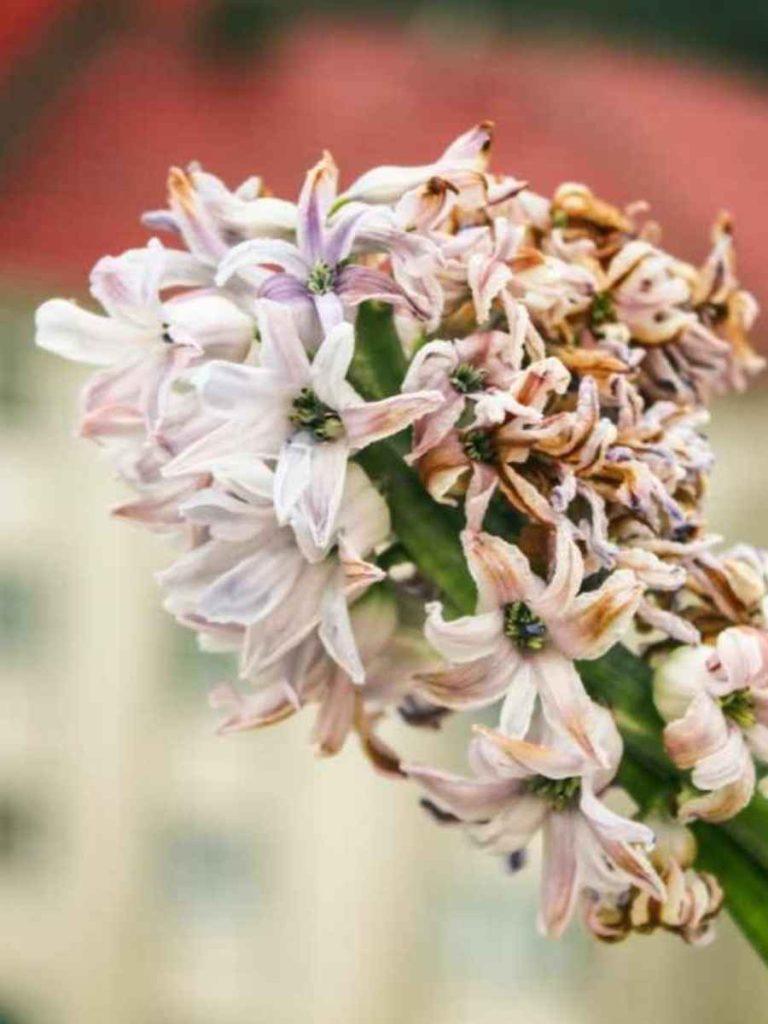

Forcing Hyacinths
You don’t need to wait until spring blooms come along to enjoy the gorgeous scent and beauty of hyacinths. During the winter months, you can grow hyacinths indoors by forcing!
But what is forcing? By providing plants with favourable conditions for development, forcing bulbs is tricking bulbs into blooming out of season. For hyacinths, it is getting them to bloom indoors in early winter instead of outdoors in mid-spring.
An important part of forcing is choosing the correct bulbs. When you are in the garden centre selecting your bulbs, you will see that there are 2 types of hyacinths: prepared and regular. Prepared hyacinths have had 2-4 weeks of pre-cooling at 9°C (48°F). These prepared bulbs are the ones to look for when you are forcing hyacinths as it will reduce the time to enjoy sweet blooms. Prepared Hyacinth bulbs have been dug in early in mid-June and have had a specific temperature treatment to advance the flower formation in the bulb. The bulbs still require a cool and dark period for approximately 10-12 weeks at 9°C. After this time there should be a 2-3” sprout and can be moved into a room temperature area and blooms will appear in 2-3 weeks. Bulbs planted by September 30th will be in bloom by Christmas!
Forcing in Pots
One way to force hyacinths is in pots. You first need to choose a pot that is at least six inches deep, so it can accommodate the roots of your hyacinth. Fill the bottom with some stones which will aid in drainage for your bulbs. Next fill the pot about halfway up with fresh potting soil and plant hyacinth bulbs, leaving just their noses, or pointy tip, above the surface (about 1 cm or ½ inch). Finally water them well and check that the soil is draining properly from the container.
Once the planting is done it is time to fake their winter. At this point, you want to keep them in a cool room (9°C or 48°F) with good air circulation (we find that a garage or basement is the perfect area). If you are forcing in pots, give them a little check each week to make sure the soil is moist and not soggy.
If you started with prepared hyacinth bulbs, after about 10-12 weeks you should be able to see some sprouting on the bulbs. If you start with regular hyacinth bulbs, then it will be about 14-15 weeks. When the green sprouts are about 2.5 cm (1”) out of the bulb, it’s time to bring the bulbs out into your favourite sunny room to enjoy. Remember to continue watering them as you don’t want the soil to dry out!

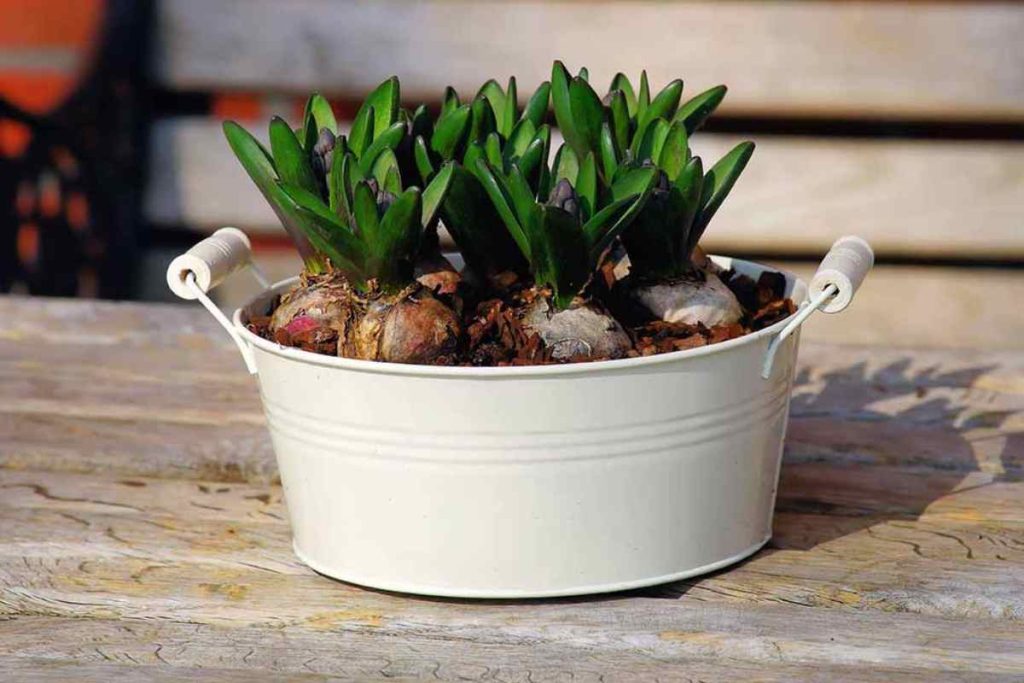
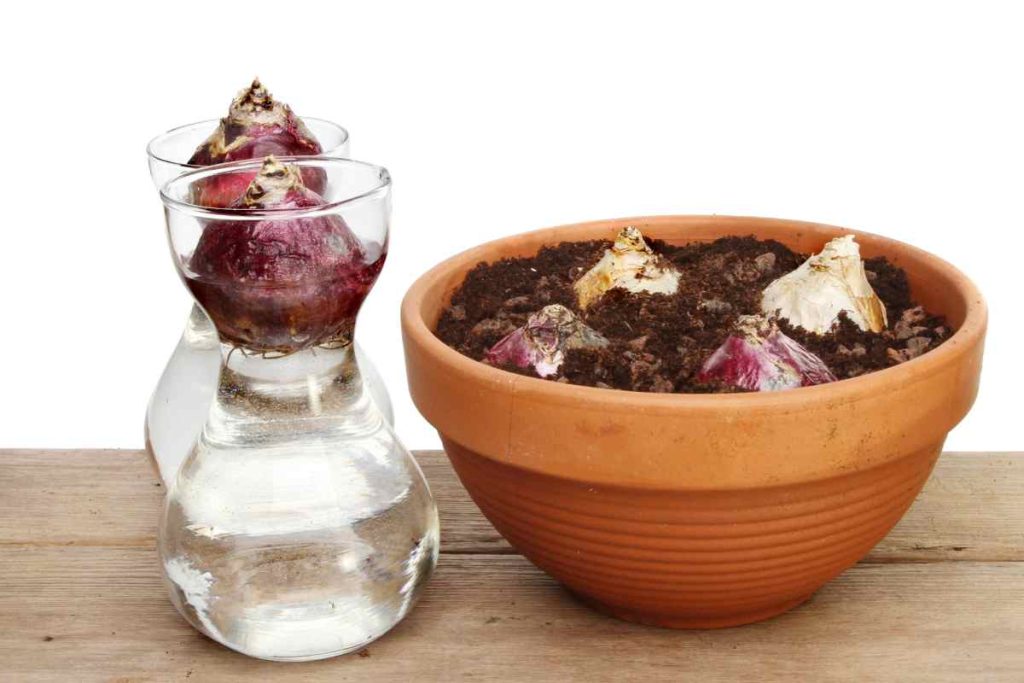
Forcing on Water
Another option is to force hyacinths on water. You can use special forcing vases with an hourglass shape that cups the bulb by separating it from the lower part. Start by filling the lower portion of the forcing vase with water and then set the bulb in the top half of the hourglass. Place the rooting side down just above the water, keeping the base of the bulb dry. Only a few millimetres away, the water and moisture below the bulb is enough to get the roots to grow down into the water in the vase.

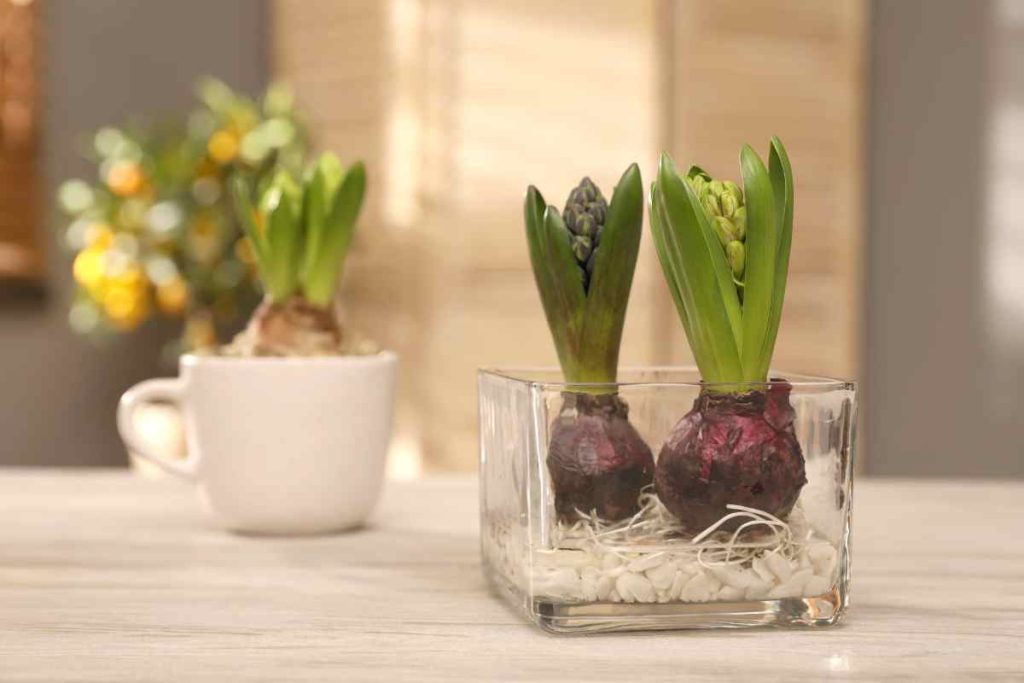
Set your hyacinth on glass in a cool and dark place, with temperatures of 9°C (48°F) and good air circulation for about 8-13 weeks. Again, basements and garages often provide these ideal conditions. Check on the bulb and vase once a week to ensure the water level is where it should be, just below the bulb, and that roots are developing. When necessary, add a little more water to the vase. Replace cloudy water by tipping out the liquid, and then refill the vase with fresh water at room temperature.
If you don’t have a water vase specifically for forcing, you can still force hyacinths with water. Instead of using a forcing vase, you can take any clear jar, fill the bottom with 5cm (2”) of clean pebbles, and then fill the bottom with water. Put the bulbs into the jar. Remember to make sure the water doesn’t touch the bulbs.
When a growth tip has appeared and is about 2.5 cm (1”) tall, bring your hyacinth on glass to a window which receives bright, indirect light. Place the vase on the windowsill and a stem will start growing towards the light. To keep the stem straight you can turn the vase occasionally. Watching and waiting for the flower buds to appear is the best part, and after 2-3 weeks, a beautiful stem of flowers will begin to bloom.
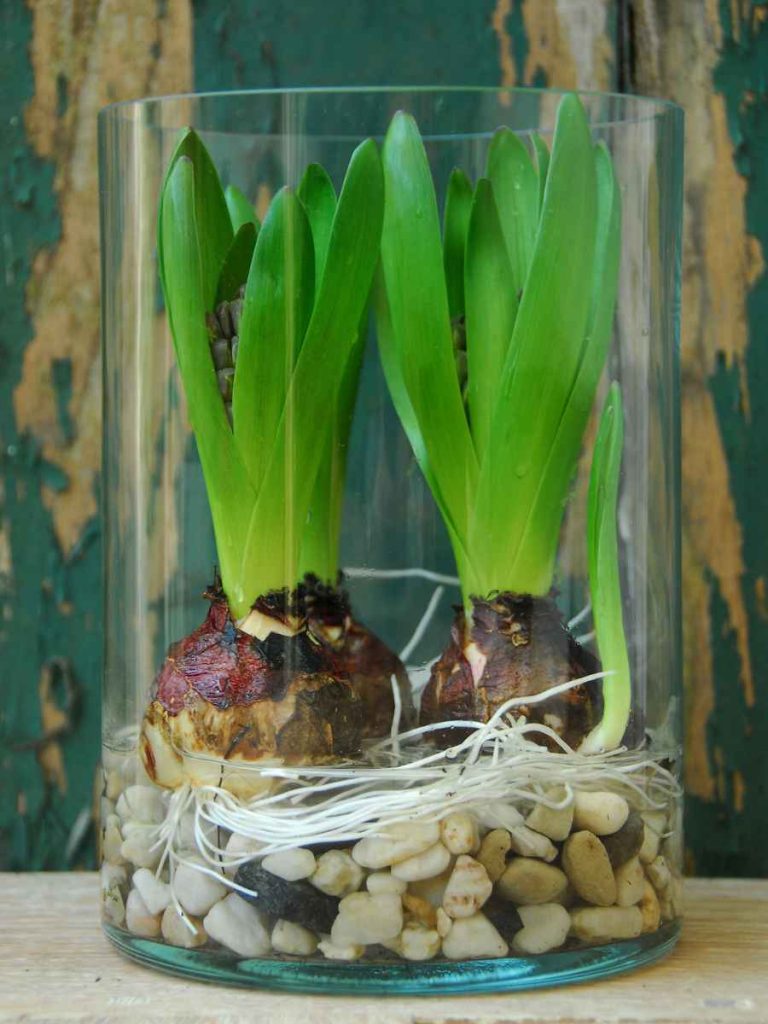
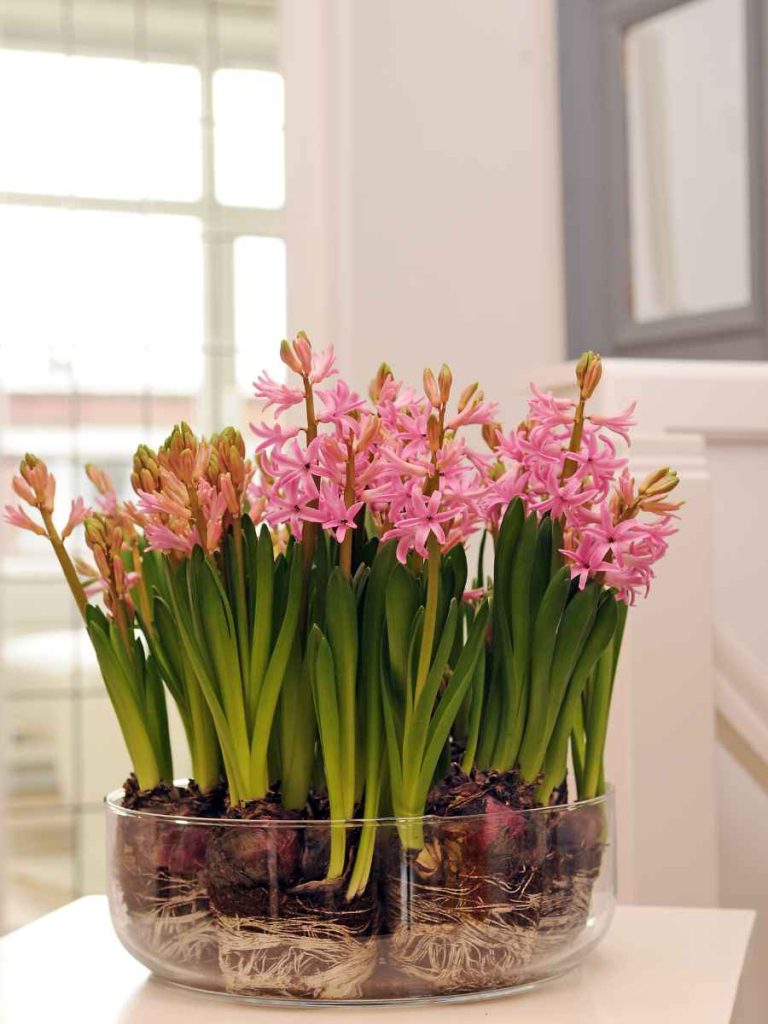

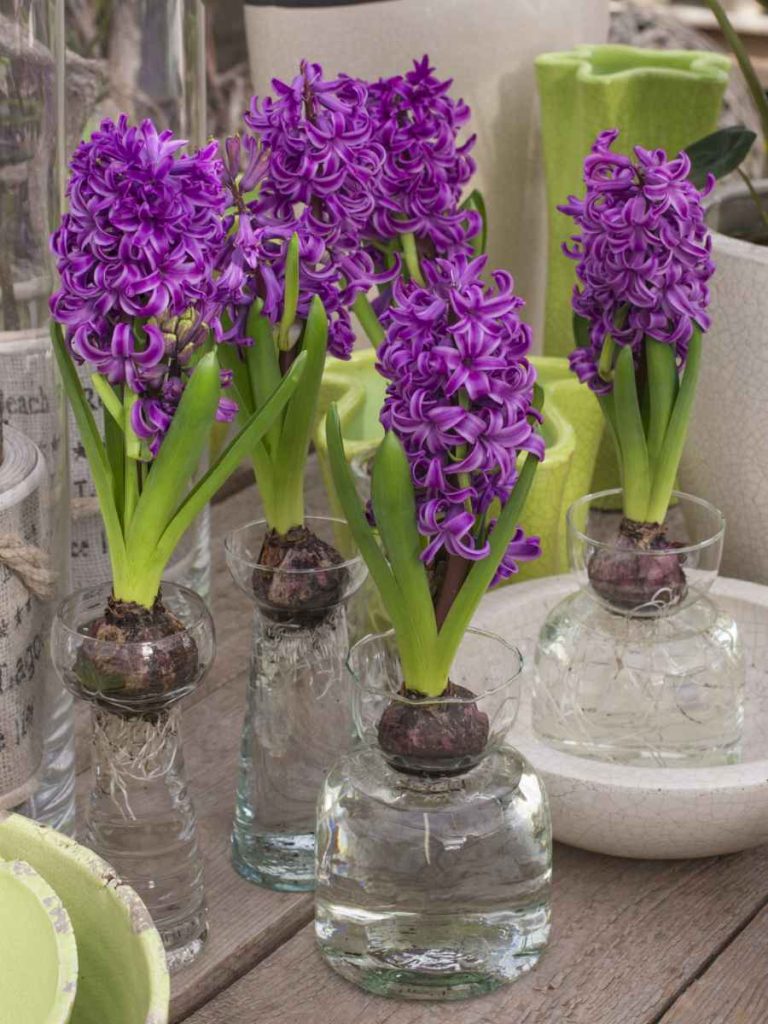
Once the flowers have finished blooming, you can remove the flowering stem and allow the foliage to continue to grow. Once the foliage turns yellow you can plant them outside in your garden to grow with your other hyacinths, where they will bloom again at the regular time in spring. For more information on forcing hyacinths and other spring flowers, check out our brochure.
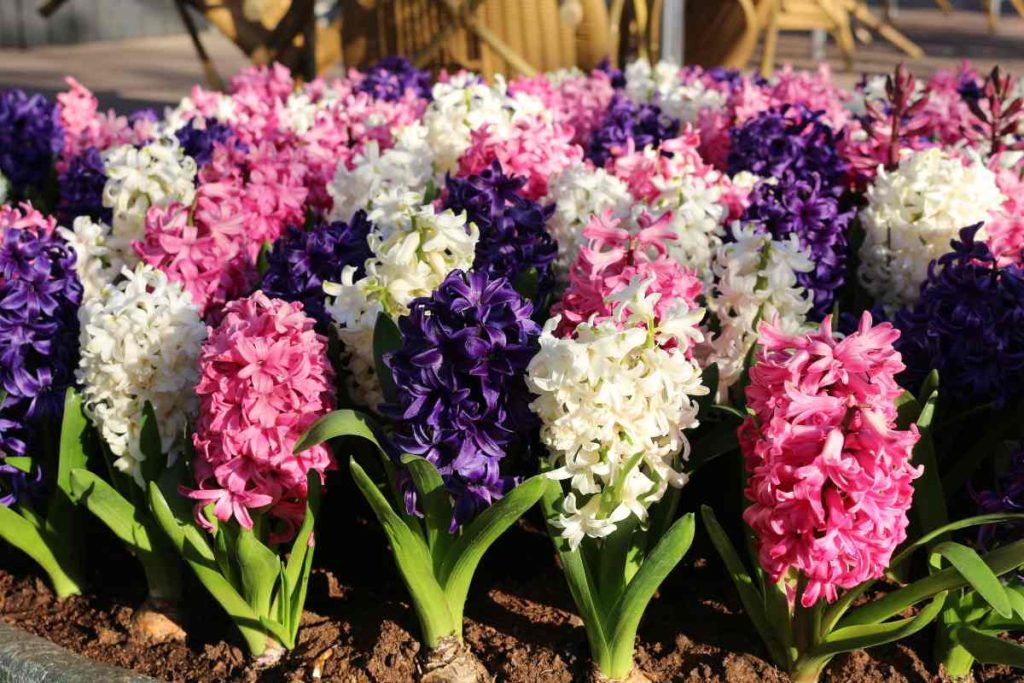
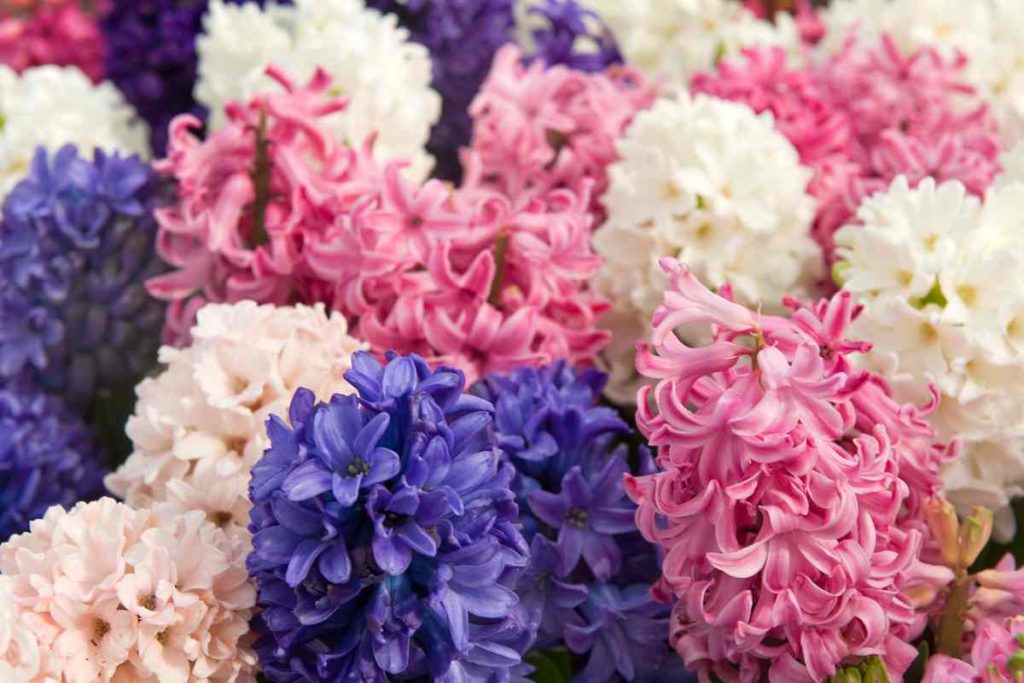
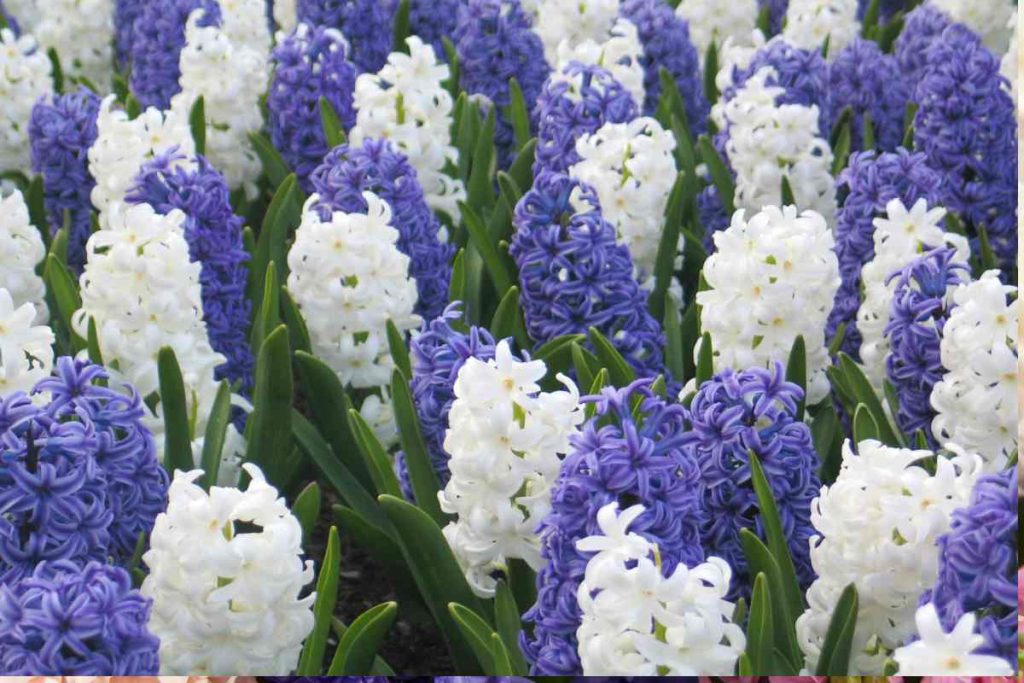
Hyacinths are prized for their mix of beauty and fragrance and make an excellent choice for any garden or container planting. By following the tips for planting, growing, and caring for hyacinths, your hyacinths will brighten up any space both inside and out!


